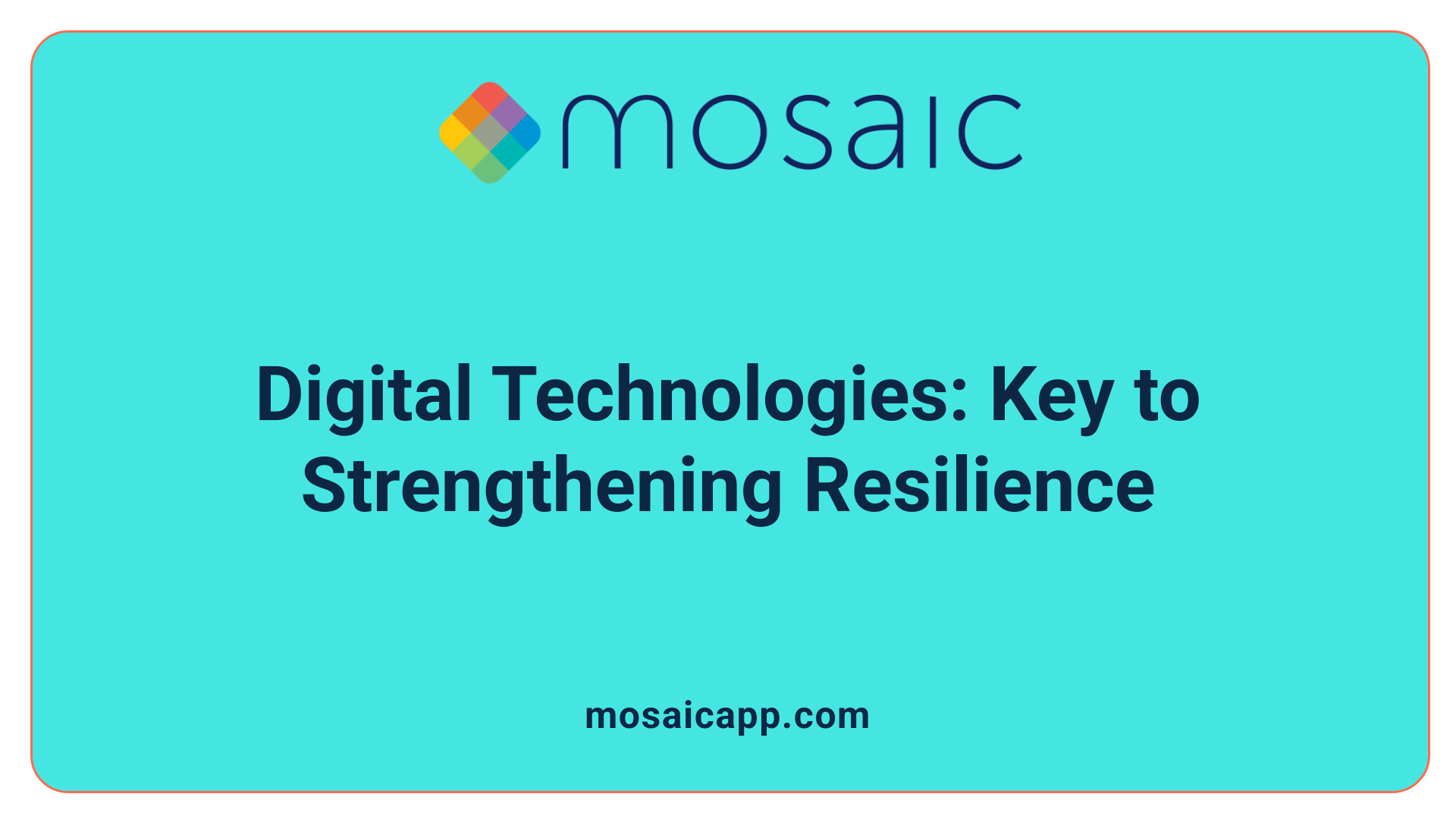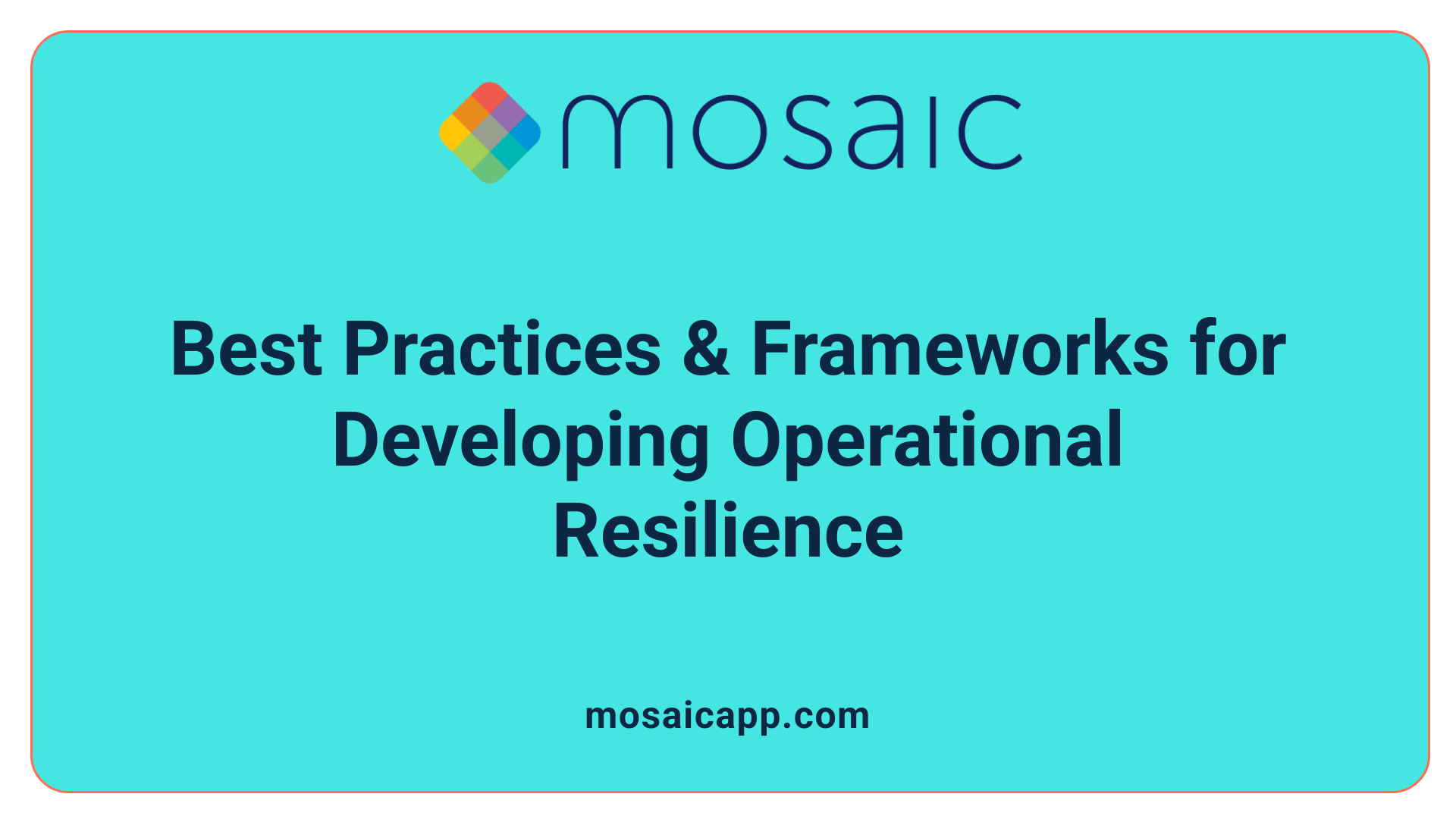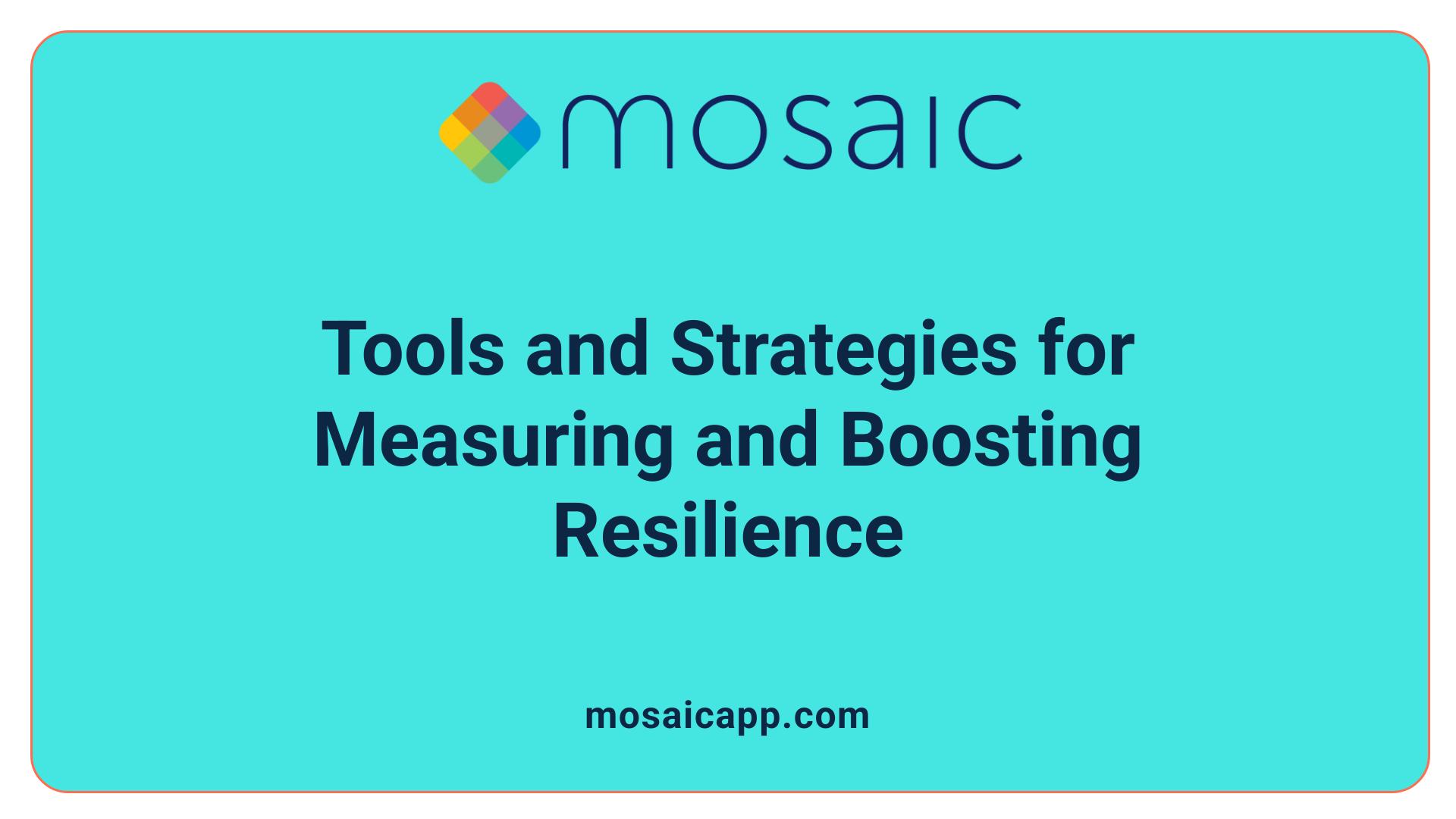Understanding the Essence of Operational Maturity and Resilience
In an increasingly volatile global environment, organizations face unprecedented operational challenges ranging from cyber threats and climate change to geopolitical conflicts. Operational maturity emerges as a strategic lever that enhances an organization’s capacity to withstand and recover from such disruptions. This article explores how elevating operational maturity levels unlocks firm resilience, enabling organizations to adapt swiftly, meet regulatory requirements, and sustain competitive advantage amidst chaos.
Defining Operational Maturity and Its Progressive Levels

What is operational maturity?
Operational maturity indicates how well an organization manages, scales, and improves its critical operational processes, including incident response, service reliability, and risk management. It reflects the organization's capability to operate efficiently, adapt to challenges, and implement continuous improvements.
Higher maturity levels typically feature robust digital tools, automation, and data-driven decision-making, enabling faster responses and greater resilience. Organizations that achieve mature operational states can better withstand disruptions and adapt to a rapidly changing threat landscape.
Standard frameworks and maturity levels
Many industry models categorize operational maturity into distinct levels. One common model includes five stages:
Level Description Traits and Technologies Impact on Performance Beginning Ad-hoc processes, minimal control Manual operations, limited data usage Low efficiency, high risk Emerging Initial formalization, some automation Basic tools, siloed automation Improving responsiveness Scaling Integrated processes, moderate automation Digital tools, structured workflows Greater reliability and consistency Optimizing Fully integrated, data-driven Advanced automation, analytics, AI Significant efficiency, predictive capabilities Innovating Continuous transformation, innovation culture Real-time analytics, autonomous systems High resilience, strategic agility
Another widely used framework is the maturity model with levels from Level 0 (Ad-hoc) to Level 6 (Excellence), covering organizational processes, governance, and risk management. These frameworks help organizations assess their current state and plan targeted improvements to advance their capabilities.
Traits characterizing mature operations
Organizations demonstrating maturity exhibit several common traits:
- Use of digital tools such as visual dashboards, central repositories, and automation engines.
- Real-time data sharing and feedback loops for proactive decision-making.
- Conducting regular scenario testing for disruptions.
- Continuous process updates based on lessons learned and changing environments.
- Strong governance, culture, and talent focused on resilience and operational excellence.
By progressing through these levels, organizations can achieve more reliable, efficient, and adaptive operations, ultimately securing a competitive edge in unpredictable environments.
The Strategic Role of Digital Technologies in Enhancing Resilience

How do digital platforms and technological advancements impact operational resilience?
Digital platforms and technological advancements play a crucial role in strengthening an organization’s ability to withstand and recover from disruptions. By providing real-time data analysis and automation capabilities, these technologies enable organizations to respond swiftly to unexpected events. For instance, cloud computing and workflow automation streamline operations, improve accessibility, and reduce the potential chaos caused by outages.
Furthermore, digital transformation fosters a more coordinated approach across various functions by integrating information and resources. This interconnected ecosystem facilitates swift decision-making and agility, which are vital in managing crises. Investment in innovative digital tools—such as predictive analytics, digital twins, and AI—helps organizations anticipate potential failures, plan recovery strategies, and mitigate risks more effectively.
However, the journey toward digital maturity has its challenges. Diminishing returns may occur beyond certain levels of digital investment, and the benefits depend heavily on regional technological infrastructure, organizational culture, and leadership commitment. Additionally, regulatory frameworks like the European Union’s Digital Operational Resilience Act (DORA) and those in the UK influence how organizations deploy digital solutions. These rules ensure that firms address vulnerabilities proactively, maintain robust cyber defenses, and adhere to best practices, thereby reinforcing organizational resilience.
In summary, advances in digital platforms and technology significantly enhance operational resilience by enabling faster response times, better coordination, and comprehensive risk management. Simultaneously, regulators’ emphasis on digital stability encourages organizations to adopt secure, compliant, and innovative resilience strategies.
From Maturity to Resilience: Building Capabilities and Cultures

Operational maturity and resilience are closely interconnected, with maturity frameworks providing the foundation for organizations to develop robust resilience capabilities. As companies progress through various levels of operational maturity—from initial, manual processes to fully optimized, preventative operations—they establish systematic approaches that enhance their ability to withstand and recover from disruptions.
Operational capabilities are essential for managing risks and addressing disruptions effectively. These capabilities include comprehensive risk assessments, real-time monitoring, and scenario testing, all supported by advanced technological tools and automated workflows. Such features enable organizations to detect vulnerabilities early, respond swiftly, and adapt strategies in response to evolving threats.
Equally important are the cultural and leadership elements that foster resilience. Strong governance, a supportive culture, and strategic leadership are enablers that motivate teams to prioritize risk awareness and continuous improvement. Digital tools like AI, no-code configurability, and personalized dashboards empower staff to engage actively with resilience processes, making risk management a shared organizational responsibility.
By integrating operational maturity with resilient practices and fostering a culture of proactive adaptation, organizations can better navigate uncertainties. This holistic approach ensures that resilience is embedded into daily operations, allowing firms not just to survive disruptions but to emerge stronger and more agile.
Maturity Level Focus Areas Description Impact on Resilience Level 0: Ad-hoc Formal controls No structured resilience processes Vulnerable to disruptions Level 1: Reactive Risk management Responds to incidents as they occur Limited foresight Level 2: Proactive Monitoring Implements baseline risk assessments Improved threat detection Level 3: Mature Continuous improvement Uses analytics for risk insights Better preparedness Level 4: Advanced Complex risk handling Manages evolving risks High adaptability Level 5: Leading Innovation & sharing Shares best practices Industry-wide resilience Level 6: Excellence Culture of excellence Embeds resilience into culture Sustained operational resilience
Building resilience involves advancing through these maturity levels, harnessing operational capabilities, and cultivating leadership that values resilience as a core business driver. The journey requires ongoing commitment, technological enhancement, and cultural change to ensure the organization can withstand disruptions and maintain competitive advantage.
Frameworks and Best Practices for Cultivating Resilience

What are best practices and frameworks for developing operational resilience?
Developing operational resilience requires a structured approach grounded in recognized frameworks and best practices.
One fundamental step involves conducting comprehensive risk assessments to identify vulnerabilities and potential failure points across all key operations. This enables organizations to understand their dependencies—whether within internal processes or involving third-party vendors—allowing for targeted improvements.
Establishing clear impact tolerances and defining measurable risk metrics are critical. These parameters help ensure that organizations can maintain essential functions during disruptions and set thresholds for acceptable levels of impact.
Implementing detailed contingency plans and business continuity strategies supports swift recovery, minimizing operational downtime. Several international standards and frameworks assist in this process. For example, ISO 22301 provides a comprehensive blueprint for business continuity management, emphasizing preparedness, response, and recovery.
Regulatory guidelines such as the EU’s Digital Operational Resilience Act (DORA) and UK FCA’s requirements also shape best practices. These mandates call for firms to regularly assess risks, test their resilience strategies through scenario simulations, and demonstrate ongoing compliance.
Scenario testing, including stress simulations and digital twins, enables organizations to validate their plans under probable crisis conditions, ensuring readiness for real-world disruptions.
Embedding resilience into governance structures fosters a culture of continuous improvement, accountability, and agility. Leveraging digital tools such as automation and advanced analytics enhances decision-making and operational adaptability.
Regularly testing communication channels and recovery procedures guarantees that all stakeholders are prepared to act swiftly during incidents. Finally, adopting an integrated Governance, Risk Management, and Compliance (GRC) approach helps align resilience efforts with strategic goals and regulatory standards.
In summary, best practices encompass risk assessment, impact tolerance setting, scenario testing, governance integration, and leveraging digital solutions—all guided by established frameworks and regulatory standards. This combination enables organizations to build a resilient, agile operational environment capable of withstanding diverse disruptions.
Measuring and Enhancing Resilience: Resources, Tools, and Strategic Actions

What resources and tools are available for measuring and improving operational resilience?
Organizations have access to a variety of resources and tools designed to assess and enhance their resilience capabilities. Specialized assessment platforms are at the forefront, supporting continuous risk evaluations, scenario testing, and mapping dependencies across operations. These platforms often incorporate AI-powered analytics, which assist in issue management, real-time monitoring, and compliance tracking.
Quantitative measurement approaches include internal scoring systems, heat maps, and resilience metrics such as overall scores expressed as percentages. These tools help organizations identify vulnerabilities and prioritize improvements. For example, frameworks like the CERT Resilience Management Model (CERT-RMM) provide structured metrics and strategic measures to evaluate operational capabilities during disruptions.
Regulatory guidance also plays a crucial role. Authorities like the Federal Reserve offer methodologies for conducting network analysis, modeling operational dependencies, and simulating systemic impacts through interconnectedness mapping. These processes help organizations understand dependencies and potential points of failure.
Automation tools further support resilience efforts by facilitating real-time monitoring and collaboration. They enable organizations to maintain up-to-date business continuity plans and respond swiftly to emerging risks. The integration of these digital resources ensures a proactive approach to resilience, allowing firms to adapt swiftly in a changing threat landscape.
Overall, combining assessment platforms, regulatory frameworks, and automation tools equips organizations to measure their current resilience status and implement strategic improvements effectively.
Charting the Path Forward: Embracing Maturity for Resilience
Achieving and maintaining operational maturity is not a one-time effort but an ongoing journey that requires commitment, strategic vision, and continuous improvement. As organizations progress across maturity levels—supported by digital innovation, comprehensive frameworks, and cultural transformation—they enhance their resilience against both anticipated and unforeseen disruptions. Embracing these practices ensures that firms are not only prepared for today’s challenges but are also positioned to innovate and thrive in the face of future uncertainties. Building resilience through operational maturity fosters a resilient enterprise capable of sustaining growth, safeguarding stakeholders, and maintaining competitiveness in a disruptive world.
References
- Operational resilience maturity: How to reach ' ...
- Getting Operationally Resilient with a Consolidated ...
- Operational Resilience to Thrive in Disruptive Times | BCG
- Resilience Maturity Assessment (ReMA) tool
- Understanding operational maturity
- The Operational Resilience Framework Introduces New ...
- [OR] [MM] Operational Resilience Maturity-level Model for ...
- How To Determine Your IT Operational Maturity Level
- Digital transformation, technological innovation, and ...
